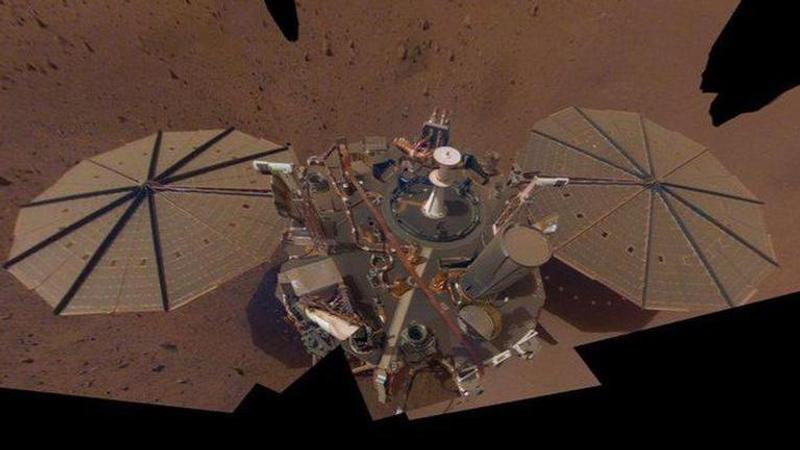Published 16:26 IST, February 14th 2022
NASA's Mars Insight lander might go out of power before end of 2022: NASA scientist
NASA says the reason for its potential 'death' is being attributed to the accumulation of dust on the lander's solar panels which is reducing the power supply.

NASA's Insight lander, which was recovered from safe mode after enduring a dust storm on Mars, is likely to go out of power in 2022. The reason for its potential 'death' is being attributed to the accumulation of dust on the lander's solar panels which is reducing the power supply required for operations. The lander, which touched down on the red planet in 2018, entered the safe mode in early January and was restored to normal operations on January 20.
Power supply might dip below the required amount by May-June
The Martian dust has always been a cause of concern for the robots that are exploring the red planet, not to forget NASA's Opportunity rover which was no longer operational owing to a dust storm that occurred in 2018. Raising the same concern, Bruce Banerdt, principal investigator for the InSight mission, has predicted that Insight's power levels might soon dip below the levels required to keep it working.
"Our current projections indicate that the energy will drop below that required to operate the payload in the May-June time frame and probably below survivability some time near the end of the year", Banerdt said as per Space News. Before that time comes, NASA scientists are using various techniques to shake off the dust grains sitting over the solar arrays. Banerdt said that the techniques have helped them raise the power output by 1-3%, although he warned that the Mars lander won't be working for more than a year from now.
Talking about the dust storm in the Mars Exploration Program Analysis Group (MEPAG) meeting last week, Banerdt had said that the scientists were unable to prepare for the power-blocking storm. NASA uses the Mars Color Imager (MARCI) camera fitted on the Mars Reconnaissance Orbiter that is hovering in Mars' orbit. With this camera, scientists are able to create coloured maps of the entire planet every day, which can be used to monitor dust storms and issue early warnings.
Image: Twitter/@NASA
Updated 16:26 IST, February 14th 2022



